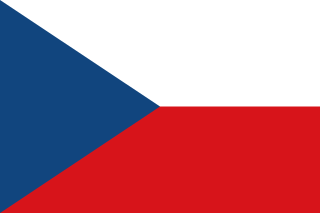Related Research Articles

Karel Ančerl was a Czechoslovak conductor and composer, renowned especially for his performances of contemporary music and for his interpretations of music by Czech composers.

Girolamo Alessandro Frescobaldi was an Italian composer and virtuoso keyboard player. Born in the Duchy of Ferrara, he was one of the most important composers of keyboard music in the late Renaissance and early Baroque periods. A child prodigy, Frescobaldi studied under Luzzasco Luzzaschi in Ferrara, but was influenced by many composers, including Ascanio Mayone, Giovanni Maria Trabaci, and Claudio Merulo. Girolamo Frescobaldi was appointed organist of St. Peter's Basilica, a focal point of power for the Cappella Giulia, from 21 July 1608 until 1628 and again from 1634 until his death.

Established in 1869 on the grounds of Vyšehrad Castle in Prague, Czech Republic, the Vyšehrad Cemetery is the final resting place of many composers, artists, sculptors, writers, and those from the world of science and politics. The centerpiece of the cemetery is the Slavín tomb designed by Antonín Wiehl, a large and notable tomb located within Vyšehrad cemetery.

Vyšehrad is a historic fort in Prague, Czech Republic, just over 3 km southeast of Prague Castle, on the east bank of the Vltava River. It was probably built in the 10th century. Inside the fort are the Basilica of St. Peter and St. Paul and the Vyšehrad Cemetery, containing the remains of many famous Czechs, such as Antonín Dvořák, Bedřich Smetana, Karel Čapek, and Alphonse Mucha. It also contains Prague's oldest Rotunda of St. Martin, from the 11th century.
Adam Michna z Otradovic, or also Adam Václav Michna z Otradovic – literally Adam Michna of Otradovice, was a Czech Catholic poet, composer, hymn writer, organist and choir leader of the early Baroque era. He is also known in simplified form as Adam Michna and during his life as Adamus Wenceslaus Michna de Ottradowicz. He was the most important Czech composer and poet of the early Baroque who initiated the development of Czech art in that era and became a significant inspiration for Czech artists of future generations.
Jan Dismas Zelenka, baptised Jan Lukáš Zelenka was a Czech composer and musician of the Baroque period. His music is admired for its harmonic inventiveness and mastery of counterpoint.

Josef Klička was a Czech organist, violinist, composer, conductor and pedagogue. He produced several large organ compositions in the style of late romanticism; these have been recorded on CD.

Marek Kopelent was a Czech composer, music editor and academic teacher, who is considered to have been at the forefront of the "New Music" movement, and was one of the most-published Czech composers of the second half of the 20th century.
The year 1644 in music involved some significant events and new musical works.

The Antonín Dvořák Museum is a museum in Prague in the Czech Republic dedicated to the Czech composer Antonín Dvořák.

Rovensko pod Troskami is a town in Semily District in the Liberec Region of the Czech Republic. It has about 1,400 inhabitants.

Josef Leopold Zvonař was a Czech composer, pedagogue, and music critic.

Jaroslav Křička was a Czech composer, conductor, and music teacher. He was the brother of poet Petr Křička[de].
Václav Jan Kopřiva was a Bohemian composer and organist.
List of selected composers born or trained in the Czech lands. The periods need to be taken with some reserve, because some composers, for example Jan Ladislav Dussek, composed music that was way ahead of their time and for example Antonín Dvořák himself was a romantic-classicist synthesist, so he does not have a perfect place in the list.
Hana Blažíková is a Czech soprano and harpist. She is focused on Medieval, Renaissance and Baroque music, appearing internationally. She has recorded as a member of the Bach Collegium Japan, among many others.

Music of the Czech Republic comprises the musical traditions of that state or the historical entities of which it is compound, i.e. the Czech lands. Czech music also constitutes a substantial part of the music culture of its direct predecessor, Czechoslovakia.
Capella Regia Prague, formerly Capella Regia Musicalis, is a Czech early music ensemble founded in 1992 by Robert Hugo. The name Capella Regia Musicalis was in reference to a famous 1693 Czech collection of sacred music by Václav Karel Holan Rovenský.

Michael Pospíšil is a classical bass, specialising in historically informed performance. He is the founder and leader of the ensemble Ritornello which performs music of the 16th and 17th centuries for voices and a great variety of instruments.

Lumír and Song is an outdoor sculpture made by Josef Václav Myslbek in 1889-1897 for Palacký Bridge. Damaged from American bombing on February 14, 1945, statues were removed in 1948 in connection with the bridge reconstruction and installed at Vyšehradské sady in Vyšehrad, Prague, Czech Republic. The statue was previously at the New Town's side of Vltava and it was installed in the gardens with two other statues from the opposite Smíchov's side. The fourth statue, Libuše and Přemysl, was heavily damaged and repaired until reinstalled with the other three in 1977.
References
- ↑ Clapham, John, and Eva Mikanová. "Holan Rovenský, Václav Karel." Grove Music Online. 2001. Oxford University Press. Date of access 13 Feb. 2024.